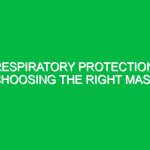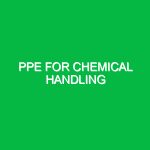In the realm of Health, Safety, and Environment (HSE), the importance of hearing protection cannot be overstated. Earplugs and earmuffs serve as crucial tools for safeguarding one of our most vital senses—hearing. Whether you work in construction, manufacturing, or any other noisy environment, understanding the significance of earplugs and earmuffs is essential for ensuring both safety and health. This article delves into the importance of these protective devices, the hazards they mitigate, regulatory standards, and best practices for their use.
Understanding Earplugs and Earmuffs
Before delving deeper into their significance, it’s essential to define what earplugs and earmuffs are. Earplugs are small devices inserted into the ear canal to block out ambient noise. They can be made from various materials, including foam, silicone, or wax, and come in different shapes and sizes to suit individual needs. Earmuffs, on the other hand, encompass the entire ear and are held in place by a band over the head. They often contain sound-absorbing materials that provide a higher level of protection against loud noises.
The Risks and Hazards Associated with Noise Exposure
Noise-induced hearing loss (NIHL) is one of the most common occupational hazards, affecting millions worldwide. Prolonged exposure to high decibel levels can lead to permanent hearing damage, impacting both personal and professional lives. According to the World Health Organization (WHO), around 1.1 billion young people are at risk of NIHL due to unsafe listening practices and occupational noise exposure.
In industrial settings, noise levels can often exceed 85 decibels (dB), a threshold where hearing protection becomes crucial. For instance, a construction site can produce sounds ranging from 90 dB for power tools to 120 dB for heavy machinery. Such environments pose significant risks, including:
- Hearing Loss: Continuous exposure to loud noise can damage the hair cells in the inner ear, leading to irreversible hearing loss.
- Tinnitus: This condition manifests as a persistent ringing or buzzing in the ears, often triggered by exposure to loud sounds.
- Communication Barriers: Excessive noise can hinder communication, increasing the risk of accidents and reducing productivity.
- Psychological Effects: Prolonged exposure to loud environments can lead to stress, anxiety, and fatigue.
Safety Precautions and Best Practices for Using Earplugs and Earmuffs
Employing earplugs and earmuffs effectively requires understanding the correct usage and maintenance practices. Here are some best practices to ensure maximum protection:
1. Choose the Right Type of Hearing Protection
Not all hearing protection devices are created equal. Selecting the appropriate earplugs or earmuffs depends on the noise levels and the specific requirements of the environment. For example, in extremely loud environments, earmuffs might provide better protection due to their ability to cover the entire ear. In contrast, earplugs may be more suitable in situations where earmuffs are impractical, such as when wearing helmets or other headgear.
2. Ensure Proper Fit
A proper fit is crucial for the effectiveness of hearing protection devices. Earplugs should be inserted deep enough to form a tight seal within the ear canal, while earmuffs should completely cover the ears without gaps. Employers should provide training on how to fit and wear these devices correctly, as improper use can significantly diminish their protective qualities.
3. Regular Maintenance and Replacement
Hearing protection devices require regular inspection and maintenance. Foam earplugs should be disposed of after a single use, while reusable earplugs must be cleaned according to the manufacturer’s instructions. Earmuffs should also be checked for wear and tear, with cushions replaced as necessary to ensure effective noise attenuation.
4. Combine Different Types of Protection
In particularly noisy environments, it may be beneficial to combine earplugs and earmuffs for enhanced protection. This dual-layer approach can significantly reduce noise exposure and further protect against hearing damage.
Regulatory Standards Governing Hearing Protection
In many countries, regulations and standards are in place to protect workers from noise-induced hearing loss. In the United States, the Occupational Safety and Health Administration (OSHA) mandates that employers assess noise levels and implement a hearing conservation program when average noise exposure exceeds 85 dB over an 8-hour workday.
Employers must also provide appropriate hearing protection at no cost to employees, along with training on the use and maintenance of these devices. Similarly, the National Institute for Occupational Safety and Health (NIOSH) provides guidelines for acceptable noise exposure limits and the effectiveness of various types of hearing protection.
Real-Life Implications: A Personal Anecdote
To exemplify the significance of earplugs and earmuffs, consider the experience of John, a construction worker with over 15 years in the industry. John’s job often exposed him to the deafening sounds of jackhammers and heavy machinery. Early in his career, he disregarded the importance of hearing protection, believing that he could manage without it. However, after experiencing bouts of tinnitus and a gradual decline in hearing, he decided to take action. John began using earmuffs in conjunction with earplugs while on site. Over time, he noticed a marked improvement in his hearing health and overall well-being. His story serves as a powerful reminder of the consequences of neglect and the importance of proactive measures in hearing protection.
Conclusion: A Call to Action for HSE Professionals
The significance of earplugs and earmuffs in the Health, Safety, and Environment domain cannot be overstated. As we navigate increasingly noisy work environments, it is imperative that both employers and employees prioritize hearing protection. By understanding the risks associated with noise exposure, adhering to regulatory standards, and implementing best practices, we can create safer workplaces and protect our hearing for future generations. Let John’s story inspire us to take the necessary steps—after all, prevention is always better than cure.


